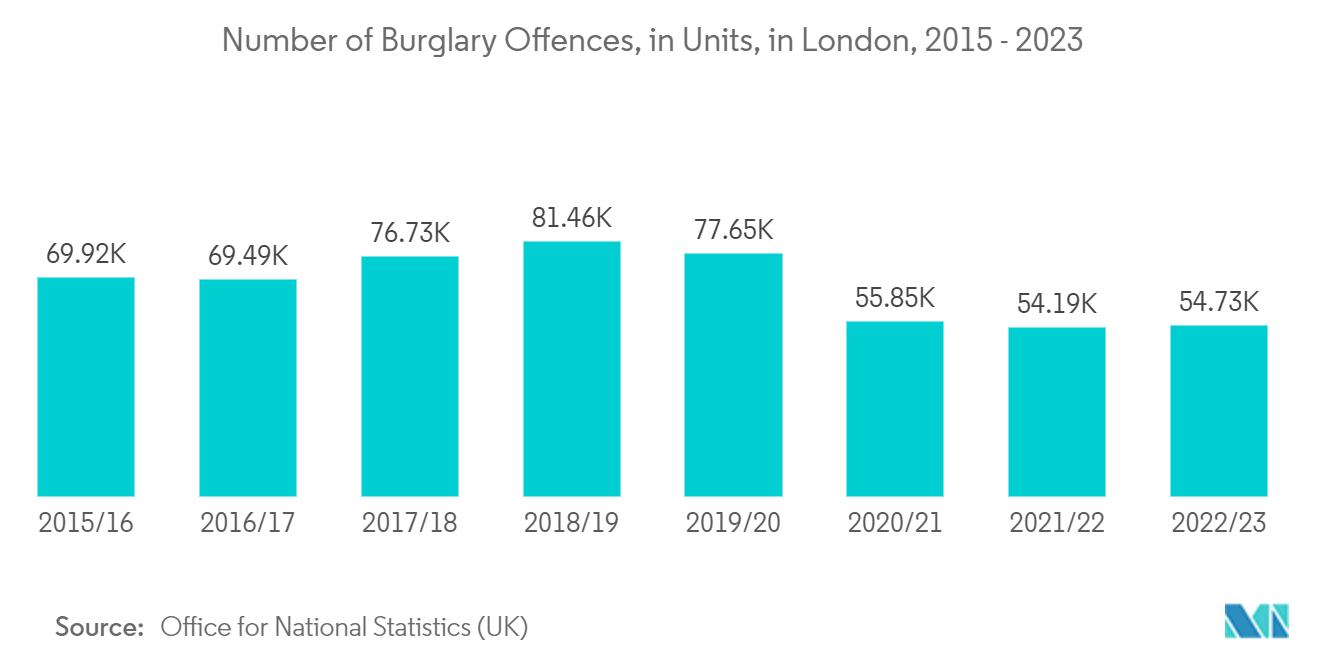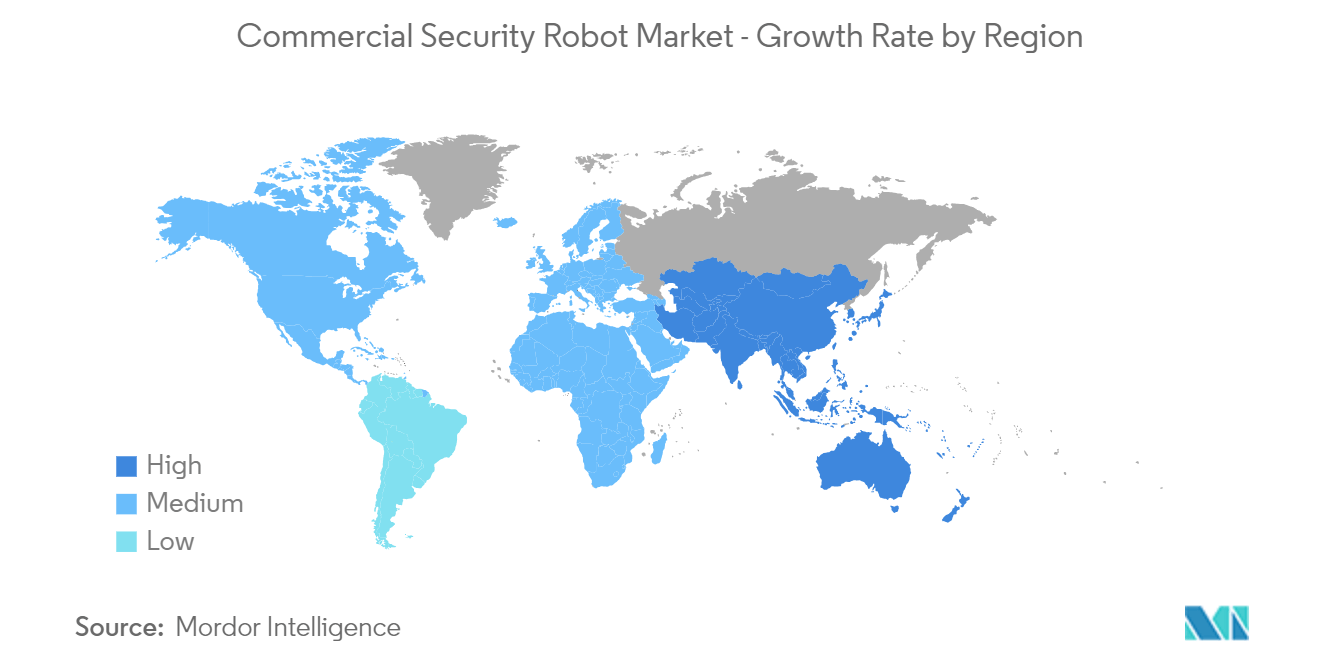Market Trends of Commercial Security Robot Industry
Increasing Use of Robots in Security and Surveillance Applications
- Security and surveillance are critical issues for any commercial building or site. Any breaches thereof can have serious consequences not only for the affected company but for the greater community and economy as well. Autonomous robots are increasingly important in ensuring secure facilities worldwide through surveillance and allied security measures. Commercial security robots constitute a rapidly-growing niche in the robotics industry, which is itself growing immensely.
- Along with a range of new solutions used in the structure of the autonomous mobile robot and innovative solutions for the autonomous motion control system, built-in supercomputers are now used in robots, enhancing their intelligent video surveillance system. Supercomputers have a phenomenal computing capacity and allow using algorithms with AI elements for image recognition and classification.
- According to the Office for National Statistics (UK), from 2022 to 2023 in London, approximately 54,730 burglary offenses were recorded, an increase compared to the previous reporting year. The increasing need for security and surveillance due to increased criminal offenses creates a demand for advanced solutions, like robots, that can assess real-time situations and provide a live feed to the security officer. According to the International Trade Administration, it is estimated that the surveillance market in India is expected to grow 25-30% annually, thereby creating a need for security robots.
- Autonomous robots utilize a combination of exponential advances in artificial intelligence, including those relating to sensor technologies, machine learning, computer vision, and robotics. The distance-sensing capabilities and multiple other attributes provide various advantages across the board regarding security.
- These robots, when used for surveillance purposes, can relieve human security personnel from being deployed in potentially dangerous environments and performing repetitive and tedious work. Security robots can work far longer and more cost-efficiently. These robots can also complement and augment existing security teams with what is known as the 'force multiplier capability.' Moreover, security robots can continuously patrol and monitor areas, providing 24X7 surveillance coverage. They can access remote or hazardous locations that might be challenging for human security personnel to reach.
- The implementation of robotics to supplement security services is gaining traction as large-scale organizations and digitally-advanced companies search for force multiplication solutions. Moreover, governments are taking initiatives to deploy these robots for security and monitoring. In March 2023, Goa became the first state in India to deploy an AI-powered self-driving robot and monitoring system following an increase in beach-related accidents due to rising numbers of domestic and foreign tourists on the coastline.

North America is Expected to Hold Significant Market Share
- Advancements in robotics, artificial intelligence, and sensor technology have made commercial security robots more sophisticated and capable of performing complex tasks such as autonomous patrolling, surveillance, and real-time data analysis. The rapid development of artificial intelligence has enabled robots to have higher intelligence and replace humans in undertaking many important tasks. According to Zippia, the average age of a security guard in the United States is 43 years. According to the Australian government's data, a security guard's average age is 41 years. As a result, the security industry is unstable and demands more technologically advanced solutions.
- In January 2023, ADT Commercials, one of the leading security integrators and providers of commercial security and safety services in the United States, showcased its new EvoGuard intelligent autonomous guarding solutions brand at CES 2023. EvoGuard uses augmented reality and artificial intelligence, combined with a fleet of autonomous humanoid robots and indoor drones, for comprehensive security surveillance in various commercial settings.
- According to the Bureau of Labor Statistics, based on a twelve-month percentage change from the consumer price index's annual inflation rate for goods and services within the United States, prices rose by 3% between June 2022 and June 2023. Such factors will limit consumer spending and industry expansions, affecting the market studied's application growth.
- In August 2022, ProsegurSecurity USA announced the integration of its newest security product, a robot dog, into its private and professional security offerings for perimeter patrol. The robot can be deployed at events and, with the help of facial recognition technology, can identify "friend or foe," alerting security about potential threats.
- Retail centers like the Park Central Mall and Phoenix Shopping Center in the United States have used robots. Security robots are becoming popular and are used in malls and other areas to reduce risks and maintain efficient operations. This implies that robots are playing an increasingly important role in society. Thus, the market studied is expected to expand in the United States due to the quick acceptance of security robots in commercial applications.


